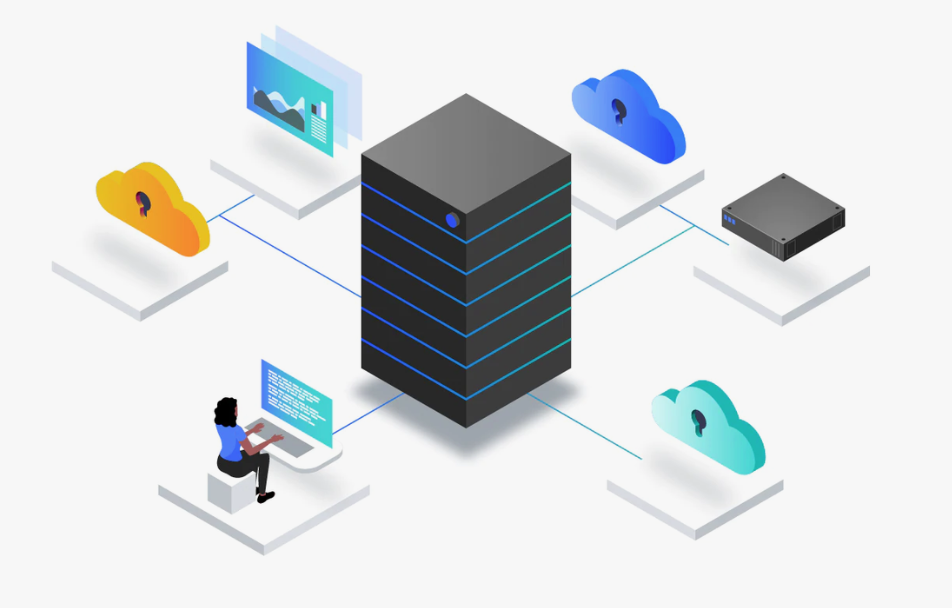
Data isn’t just information—it’s the lifeblood of modern enterprises. But managing it efficiently? That’s the real challenge. Businesses generate terabytes of data daily—structured, unstructured, mission-critical.
Where does it all go? How is it secured, accessed, and scaled without bottlenecks?
It all depends on SANs, or Storage Area Networks—the backbone of enterprise data management.
As per a survey, the global enterprise data management market is likely to grow from $101.04 billion in 2024 to $224.87 billion by 2032 with a CAGR of 10.5%.
What if businesses rely on fragmented storage—local drives, scattered servers, and unpredictable network connections? Chaos. Now, enter SANs.
These dedicated high-speed networks centralize storage, ensuring data is always available, secure, and fast—no more sluggish performance or data silos.
But how do SANs achieve this? Let’s break it down.
1. Centralized Storage: No More Data Islands
Data scattered across multiple servers? That’s a recipe for inefficiency. SANs consolidate enterprise storage solutions into a unified system, eliminating inconsistencies and redundancy.
Instead of servers juggling their disks, they access a shared storage pool—leading to:
- Better resource utilization – No underused or overloaded storage.
- Simplified management – One control center instead of multiple isolated systems.
- Seamless scalability – Need more storage? Just expand the SAN without disruptions.
2. Blazing-Fast Performance
Speed makes or breaks enterprise operations. SANs store data, yes, but at lightning speeds move it. But how? With dedicated, high-bandwidth connections, storage never competes with regular network traffic.
This leads to faster database transactions, smoother virtual machine operations, and quick access to large datasets for analytics and AI workloads. Why settle for slow, congested storage when you can have a dedicated high-speed data highway?
3. Unbreakable Reliability & Redundancy
What happens if critical data is lost? Disaster. SANs prevent that nightmare with built-in redundancy and failover mechanisms. If a disk fails, another takes over at once. No downtime. No panic.
But regardless of the complexity, RAID configurations protect against hardware failures, and snapshots and replication ensure data being backed up in real time; even when a single component crashes, automated failover mechanisms keep applications running. When enterprise storage solutions require resiliency, SANs deliver.
4. Seamless Data Protection & Security
Cyber threats are evolving. Data protection isn’t optional—it’s a necessity. SANs offer enterprise-grade security, ensuring that only authorized users and systems can access critical data.
- Encryption protects sensitive information.
- Access controls prevent unauthorized modifications.
- Multi-site replication protects against disasters such as ransomware attacks.
Because when data is your most valuable asset, you can’t afford to leave it vulnerable.
5. Virtualization & Cloud Integration
Businesses are shifting to hybrid cloud models, and SANs are built for this transition. They integrate seamlessly with virtualization platforms like VMware and Hyper-V, enabling enterprises to:
- Run virtual machines without storage bottlenecks.
- Scale workloads dynamically based on demand.
- Bridge on-prem storage with cloud environments.
Want the power of on-site storage with the flexibility of the cloud? SANs deliver.
6. Scalability Without Limits
Growth is good—until your storage can’t keep up. Traditional storage architectures struggle to scale efficiently, leading to performance bottlenecks and unnecessary costs. SANs, however, scale seamlessly:
- Add capacity without downtime—no interruptions, no migrations.
- Optimize resources dynamically—storage goes where it’s needed.
- Future-proof infrastructure—grow without overhauling systems.
Because storage should adapt to your business, not the other way around.
7. Cost Efficiency: More Than Just Saving Money
Let’s talk cost—not only in terms of dollars but efficiency. SANs eliminate hidden expenses that accrue with traditional storage configurations. There is less wasted capacity, meaning storage resources are pooled and optimized.
Lower management overhead comes from centralized control, reducing administrative complexities. Reduced downtime costs ensure that operations keep running smoothly, preventing financial losses from unexpected failures.
Enterprise storage solutions should maximize value, not merely cut costs. SANs do just that.
Why Enterprises Can’t Ignore SANs
Are SANs worth the investment? Consider this:
- What happens when critical applications slow down due to storage bottlenecks?
- How do you ensure seamless business continuity when hardware fails?
- Can your current storage infrastructure support future growth without major overhauls?
If these questions raise concerns, it’s time to rethink storage strategies. SANs don’t just store data—they empower enterprises with speed, resilience, security, and scalability.
Conclusion
Modern business cannot afford to be inefficient. With data doubling at an alarming rate, conventional storage solutions simply cannot keep pace. Storage Area Networks provide a high-performance, scalable, and secure foundation on which enterprises may build.
Whether you’re working with mission-critical databases, AI-driven analytics, or cloud workloads, SANs ensure your storage infrastructure is built for the future—not stuck in the past.
Read More: 7 Key Benefits of Scalable Enterprise Data Storage Solutions







